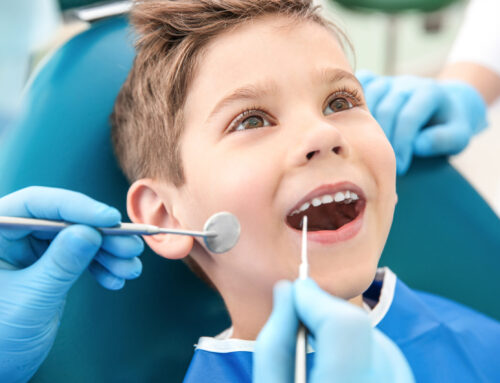When most people think of orthodontics, they imagine teenagers with metal braces, awkward smiles, and the anticipation of straighter teeth in the future. But what many parents don’t realize is that orthodontic care can—and should—start much earlier. In fact, scheduling an orthodontic evaluation by the time your child turns seven can make a significant difference in their dental development and potentially save you thousands of dollars in future treatment costs.
At Ahava Orthodontics in Fort Worth, Drs. Andy and Shawne Barron specialize in early orthodontic intervention designed to guide growth, prevent complex issues, and reduce the need for invasive treatments down the road. Here’s why early evaluations matter and what they can do for your child’s future smile and your family’s budget.
Why Age Seven Is the Magic Number
According to the American Association of Orthodontists, children should have their first orthodontic evaluation by age 7. This might seem young, especially when most kids are still losing their baby teeth. But at this stage, the jaw is still growing, and a mix of baby and permanent teeth provides valuable insight into how the adult teeth will eventually come in.
Even if your child’s teeth appear straight, problems may be developing below the surface. Early evaluations allow orthodontists to assess jaw growth, spacing, bite alignment, and the emergence of adult teeth. Spotting these issues early means orthodontists can take steps to guide proper development rather than waiting for more severe problems to arise.

Common Issues Caught Early
Early evaluations are particularly useful in detecting issues like:
-
Overbites or underbites
-
Crossbites and open bites
-
Severe crowding or spacing
-
Early or late loss of baby teeth
-
Jaw growth discrepancies
-
Mouth breathing or tongue thrusting
-
Prolonged thumb sucking
These aren’t just cosmetic concerns—they can affect how a child eats, speaks, breathes, and even sleeps. If left unaddressed, they may lead to more complex dental problems that require surgery or multiple phases of braces in the teenage years.
The Power of Phase I Treatment
When orthodontists detect a problem during an early evaluation, they may recommend what’s called Phase I treatment. This isn’t the same as full braces. Instead, it’s a form of early intervention that uses appliances like expanders, space maintainers, or even partial braces to correct growth issues and prepare the mouth for the eventual arrival of permanent teeth.
For example, a palatal expander can widen a narrow upper jaw, creating room for adult teeth to come in without crowding. Space maintainers can hold the position of a lost baby tooth so that nearby teeth don’t shift into the empty space. These small interventions make a big difference in how adult teeth erupt and can drastically reduce the length and cost of later treatments.
Financial Benefits of Early Evaluation
Orthodontic care can be expensive, especially if severe problems require long-term braces, tooth extractions, or jaw surgery. But when you intervene early, the treatment plan can be simpler, shorter, and significantly less expensive.
Let’s say your child has a narrow upper jaw. If you wait until they’re a teen, that issue might require tooth extractions, braces, and possibly surgery to correct. But if treated at age 7 or 8 with a palatal expander, the jaw can develop more naturally, reducing or eliminating the need for those more aggressive treatments.
Similarly, early evaluation helps orthodontists monitor the eruption of permanent teeth, reducing the likelihood of teeth coming in at the wrong angles or becoming impacted—another expensive issue to fix later.
Better Results, Less Time in Braces
Another major benefit of early evaluation is that it often leads to better and more stable results. Teeth that grow in with enough room and proper alignment are easier to maintain. Kids who undergo early treatment typically spend less time in braces during their teen years—or in some cases, avoid them altogether.
And since Phase I treatment often creates a healthier foundation for future dental development, the results are more stable long-term. That means less risk of relapse or needing to go back into treatment as an adult.
Improved Self-Esteem and Comfort
Beyond health and financial benefits, early orthodontic care can also provide a boost to your child’s confidence and comfort. Kids with obvious bite issues or severely crooked teeth may become self-conscious or experience teasing. Early intervention helps them develop a straighter smile during the critical stages of social development, making them more comfortable and confident as they grow.
Treatments like Myobrace—offered at Ahava Orthodontics—also address habits like mouth breathing or incorrect tongue posture, which can affect a child’s facial development, sleep quality, and even academic performance.
Give Your Child a Head Start with Ahava Orthodontics
Orthodontic problems don’t fix themselves—they tend to get worse over time. Waiting until your child is older might mean more time in braces, higher costs, and more discomfort. On the other hand, a simple evaluation around age seven can unlock a pathway to easier, more effective treatment.
At Ahava Orthodontics in Fort Worth, Drs. Andy and Shawne Barron are committed to proactive, family-focused care. Our goal is to guide your child’s smile from the start—saving you time, money, and stress along the way.
If your child is nearing their seventh birthday or showing signs of crowding, jaw misalignment, or bite issues, don’t wait. Schedule an early orthodontic evaluation today and invest in their lifelong smile.




